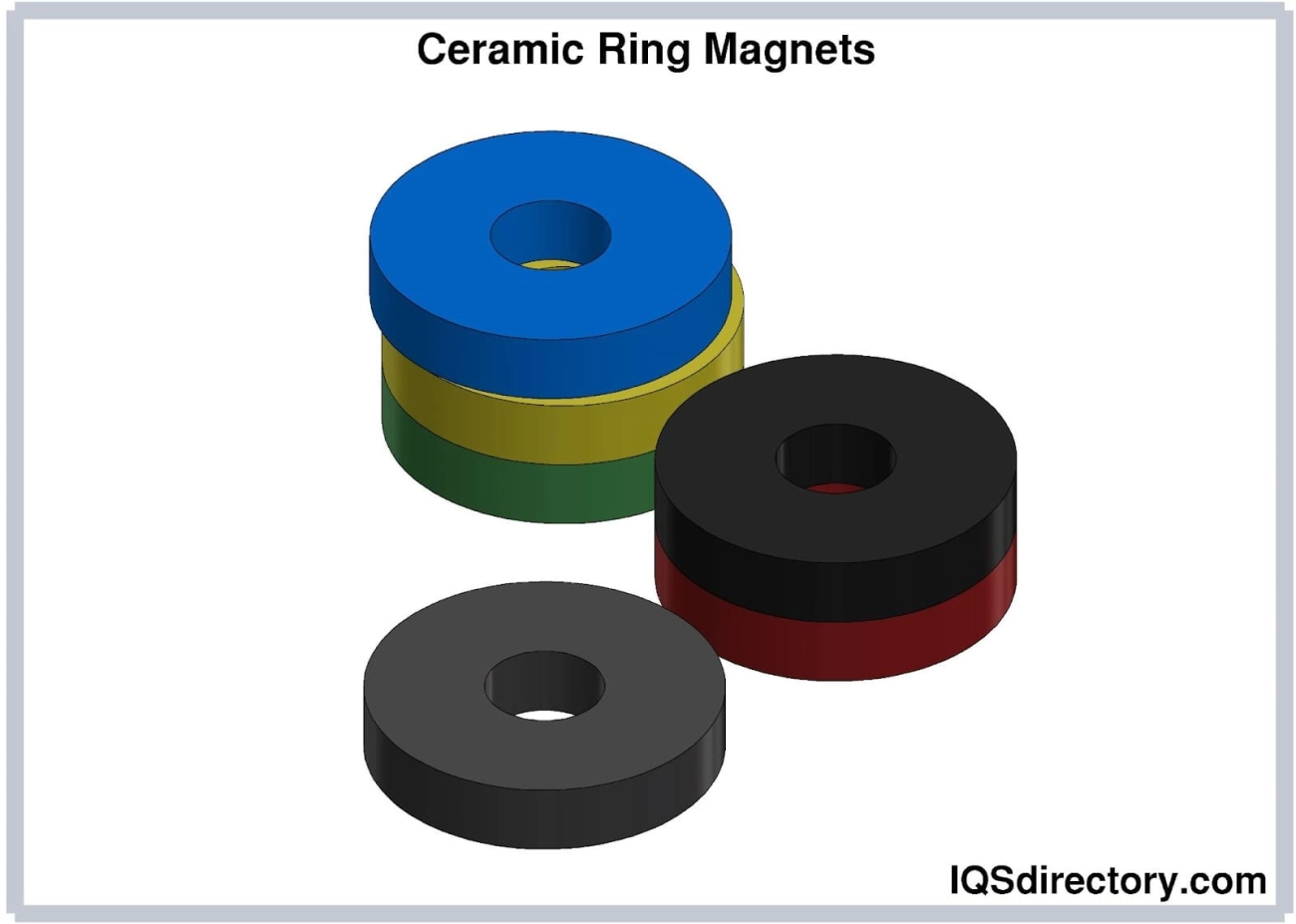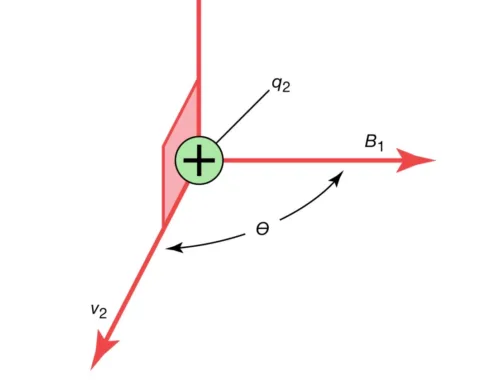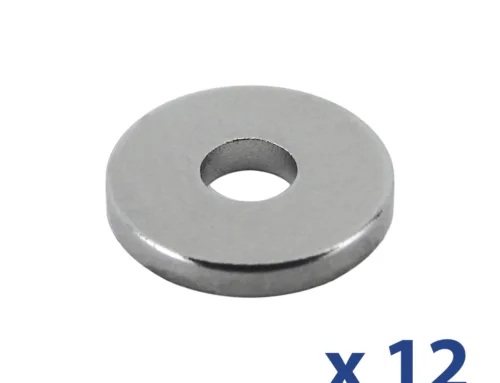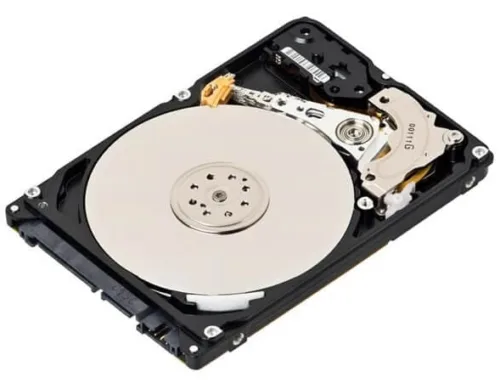What Are Ceramic Magnets
Ceramic magnets, also known as ferrite magnets, are a popular type of permanent magnet made from iron oxide mixed with other metallic elements. The most common materials used are strontium ferrite and barium ferrite. These materials create strong magnetic properties while keeping costs low, making ceramic magnets widely used across industries.
Ceramic magnets are typically produced in various shapes to meet different needs, including discs, blocks, rings, and cylinders. This flexibility in design allows them to fit well in many applications, from small sensors to large motors. Their ability to maintain strength without expensive materials makes them a reliable choice in many everyday and industrial products.
The Scientific Principles Behind Ceramic Magnets
Ceramic magnets, also known as ferrite magnets, work because of the way their tiny magnetic regions—called magnetic domains—line up. When these domains point in the same direction, the magnet produces a magnetic field. The key materials, strontium ferrite and barium ferrite, give ceramic magnets their magnetic power by affecting how these domains behave.
Two important properties define ceramic magnets:
- Coercivity: This is how well the magnet resists losing its magnetism when exposed to external magnetic fields or heat. Ceramic magnets have high coercivity, so they keep their strength over time.
- Remanence: This measures the magnet’s remaining magnetic field after an external magnetizing force is removed. Ceramic magnets have moderate remanence, meaning they hold decent magnetism but aren’t as strong as some rare-earth magnets.
Here’s a quick comparison with other common magnet types:
| Magnet Type | Coercivity (Resistance to Demagnetization) | Remanence (Magnetic Strength) | Key Use Cases |
|---|---|---|---|
| Ceramic (Ferrite) | High | Moderate | Motors, sensors, speaker magnets |
| Neodymium | Moderate to low | Very High | Electronics, high-strength tools |
| Alnico | Low | High | Sensors, aerospace, pickups |
Unlike neodymium or alnico magnets, ceramic magnets get their strength mainly from their ferrite composition and domain alignment, not rare-earth elements. This gives them good durability, especially in tough environments, but with somewhat lower magnetic power.
How Ceramic Magnets Generate Magnetic Fields
Ceramic magnets create magnetic fields through the alignment of tiny magnetic regions called domains. Inside the magnet, electrons have a property called spin, which acts like a tiny magnet itself. When many electron spins align in the same direction within these domains, their magnetic effects add up, producing a strong overall magnetic field.
The manufacturing process plays a big role in how strong this magnetic field gets. After shaping the ceramic magnet—usually from materials like strontium ferrite—the magnet goes through a magnetization step. This involves exposing it to a powerful external magnetic field, which forces most of the domains to point the same way. The better this alignment, the stronger and more stable the magnet.
Ceramic magnets keep their magnetism over time mainly because of a property called coercivity. This means the magnetic domains resist changes even when exposed to heat or external magnetic forces. That’s why ceramic magnets are popular in applications where long-lasting, stable magnets are needed without worrying about the magnet weakening quickly.
Properties and Characteristics of Ceramic Magnets

Ceramic magnets, also known as ferrite magnets, offer reliable magnetic strength and stability. While they aren’t the strongest magnets out there, their magnetic properties hold steady over time without much loss. This makes them a solid choice when consistent performance matters.
When it comes to temperature resistance, ceramic magnets handle moderate heat well, usually up to around 250°F (120°C). Beyond that, their magnetic strength starts to drop. So, they work great in everyday environments but aren’t ideal for high-heat applications.
One big advantage is their excellent corrosion resistance. Unlike some metal-based magnets that can rust or degrade, ceramic magnets resist corrosion naturally. This makes them well-suited for outdoor or humid conditions without needing extra coatings.
On the flip side, ceramic magnets are mechanically hard but brittle. They can withstand wear and tear to a degree, but they’re prone to chipping or cracking if dropped or hit hard. This is something to keep in mind for applications requiring durability under impact.
In , ceramic magnets balance decent magnetic strength with stability, good temperature tolerance for most uses, strong corrosion resistance, and mechanical hardness—but they must be handled carefully to avoid breakage.
Common Applications of Ceramic Magnets
Ceramic magnets are widely used thanks to their reliable magnetic strength and durability. In industry, you’ll often find them in motors, sensors, and loudspeakers. Their ability to maintain magnetism under heat and corrosion makes them ideal for these demanding environments.
In everyday consumer products, ceramic magnets show up in refrigerator magnets, magnetic tools, and even some types of magnetic holders. They’re cost-effective and long-lasting, which is why they’re preferred in household use.
Advantages and Limitations of Ceramic Magnets
Ceramic magnets offer several benefits that make them popular across different industries. Here’s what stands out:
Pros
Cost-effective: Made from affordable materials like strontium ferrite and barium ferrite, ceramic magnets are budget-friendly compared to rare earth magnets.
Corrosion resistant: They hold up well against moisture and rust without needing extra coatings, making them great for long-term use.
Good magnetic strength: While not the strongest magnet type, ceramic magnets provide reliable magnetic power suitable for many everyday applications.
Cons
Heavier: Ceramic magnets tend to be denser, adding more weight than lightweight alternatives like neodymium magnets.
Brittle: They can break or chip easily if dropped or subjected to impact due to their ceramic nature.
Lower magnetic power: Compared to rare earth magnets such as neodymium, ceramic magnets produce weaker magnetic fields, limiting their use in high-performance settings.
Suitability Guidance
Ceramic magnets work best when you need strong corrosion resistance and consistent magnetic properties without breaking the bank. They are ideal for:
- Industrial motors and sensors where durability matters
- Household items like refrigerator magnets and magnetic tools
- Applications where weight is less of an issue but cost and longevity are priorities
For projects demanding ultra-strong magnetic fields or lightweight materials, you might consider rare earth options instead. But for reliable, stable magnetism and cost savings, ceramic magnets remain a solid choice in the market.





Leave A Comment